Last Updated: June 7, 2024
In Costa Rica, you can do hundreds of different tours. Of course, some activities require an expert guide, like waterfall rappelling, zip lining, or whitewater rafting. But what about things like national park hikes and hanging bridges? Is it beneficial to have a guide for these activities? In this post, we’ll let you know what it takes to become a tour guide in Costa Rica and when it’s good idea to hire one.

Tour Guides in Costa Rica
Licensing/Certification
Before we get into the specifics of when it is helpful to hire a guide, we’ll first explain about how guides become certified in Costa Rica. It’s a longer, more involved process than many people realize.
In Costa Rica, the Instituto Costarricense de Turismo (Tourism Institute, or ICT for short) certifies guides. There are different types of certifications you can apply for. These include general guide, local guide (specific to one geographic area), adventure guide, and naturalist guide.
To be a general guide, you have to meet several requirements. Most notable is that you must complete a 1,000+ hour tourism course. This ensures knowledge of Costa Rica’s geography, natural history, cultural heritage, and ancient and contemporary history. The course also covers important basics like customer service, English proficiency, and safety (CPR and high-level First Aid).
General guides also need to have their paperwork in order. They must be paying taxes and contribute to the country’s socialized health care system.
Local guides and naturalist guides have similar requirements. To have the naturalist guide designation, you first need to become a general or local guide. Then you need to take additional, specialized courses. These include biology, ornithology, herpetology, botany, and geology. Or, you can show an equivalent educational background. Time is spent both in the classroom and through field work.
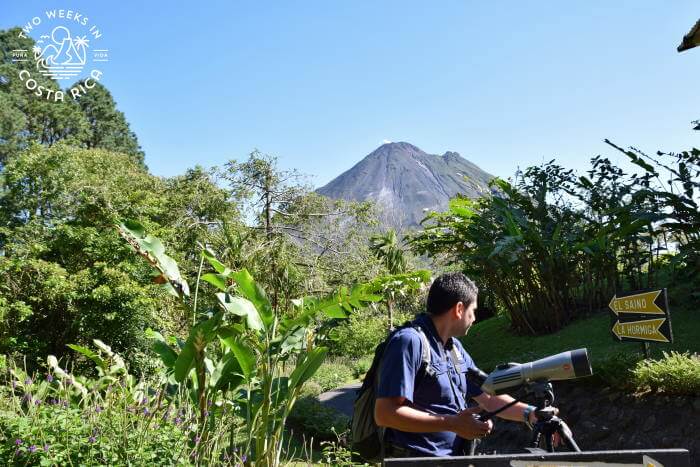
Using ICT-Certified Guides
If you hire an ICT-certified guide who has gone through this fairly long process, chances are, they will be good. They will have a solid educational background, be trained in tourism, and have an eagerness to teach visitors about their country.
Guides/Companies Without Certification
ICT certification is not legally required in Costa Rica. Because of this, there are plenty of tour companies/guides operating more informally. While some do have relevant educational background, others do not. This can be a problem at busier national parks, like Manuel Antonio National Park.
This is why it is important to do some research on the guide/company you plan to hire. You can get a lot from reviews online. Checking out a tour company’s website or TripAdvisor page will provide insight into if they seem like a serious business.
If the guide is ICT certified, that is even better. Then you know that they have gone through the formal process of becoming a guide.

Here is a link to the ICT website to check if a guide is certified.
Note that just because a guide is not ICT certified doesn’t automatically mean that he or she isn’t reputable. There are other organizations that have learning programs (e.g., Instituto Nacional de Aprendizaje (National Learning Institute); Instituto Costarricense de Educación Turística (Institute of Education for Tourism)). These people may still have a lot of knowledge but not gone through the formal process. Just be a little extra careful when vetting a guide that isn’t ICT certified before using one.
When to Hire a Naturalist Guide
For Expertise
Now that you know that a lot goes into becoming a guide in Costa Rica, you can appreciate more why they would be beneficial.
Not only is a good guide able to teach you about the local flora and fauna you will encounter, but they are able to spot more than you can with their trained eye. They often come with equipment as well, like binoculars or powerful scopes. These let you spot birds and animals hiding high in the treetop canopy.
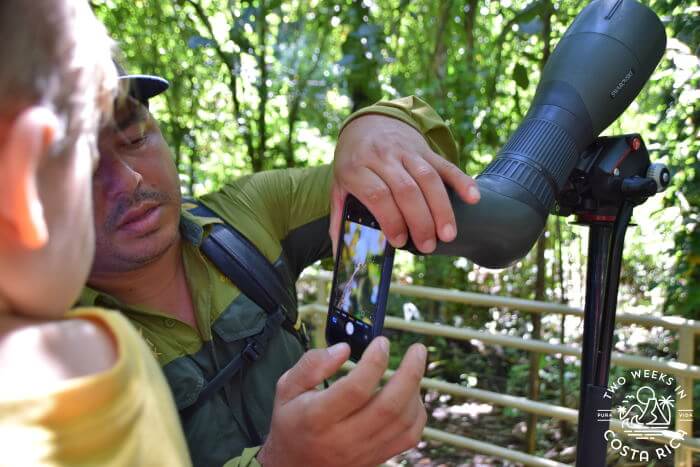
Another way that guides are useful is by giving background on the place you are visiting. Since most national parks in Costa Rica don’t have much, if any, information along the trail, it can be nice to have a local expert.
For example, on a volcano hike in the Arenal area, a guide can teach you about the prior eruptions. Many guides are locals in the area where they do tours, so they would be talking about their own backyard. For Arenal Volcano, they might be able to share interesting tidbits on how nearby communities were affected by past eruptions and what has changed since then.
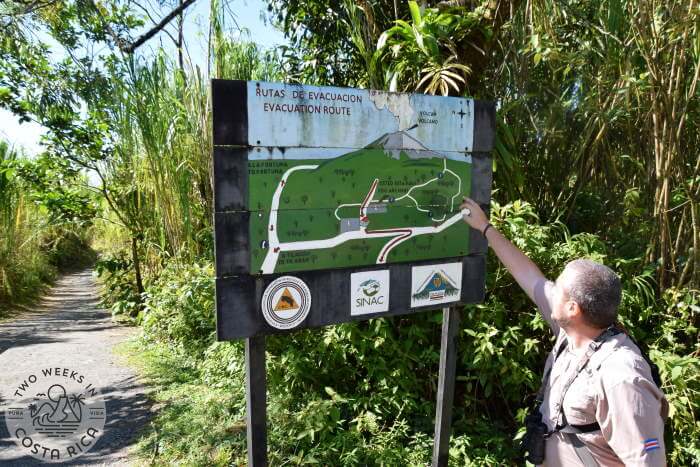
Guides are also really useful when you want to see a specific animal. Some people come to Costa Rica wanting to see a sloth, for example, so hiring a guide can help make sure that happens.
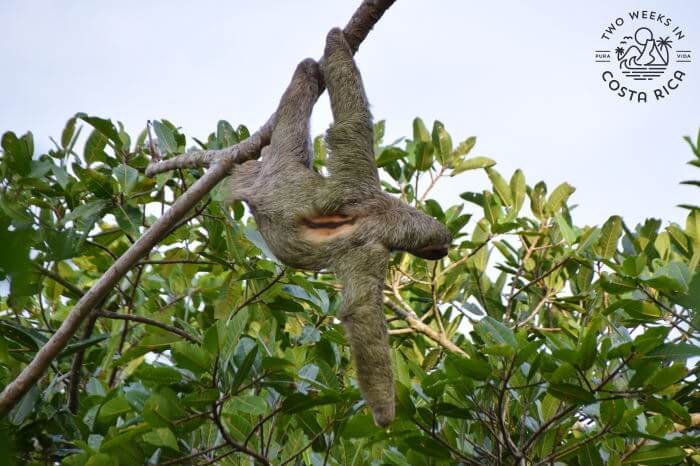
In Specific Areas
In some areas of Costa Rica, having a guide lead the way can be essential. Here are some specific places where we recommend hiring a guide.
In the cloud forests of Monteverde, naturalist guides can add a lot of value. Although this is a very biodiverse area with hundreds of different birds and animals living in its dense forests, spotting wildlife can be tough. Birds and animals are often hiding in the canopy, camouflaged in the foliage, or obscured by cloud cover. A guide will know where to look, and at the same time, teach you some interesting facts about the cloud forest.

Similarly, in San Gerardo de Dota, a guide is essential to spotting the bird that most people come to see, a Resplendent Quetzal. Local guides know where these illusive creatures are nesting or feeding on any given day. This almost guarantees a sighting during prime viewing season.
The tropical dry forest found in the northwestern part of the country in Guanacaste is another region where a guide can be helpful. Hikes to places like Rincon de la Vieja Volcano or Miravalles Volcano can be much more interesting with a guide. They’ll teach you about the geology of the volcanoes and different volcanic features.
These are just a few regions where it can be especially difficult to see wildlife on your own. However, a good naturalist guide can really add value even in places where wildlife is easy to see.
A good example is Manuel Antonio National Park. Although this park has a ton of visible wildlife, we have still enjoyed doing a guided tour of this park ourselves. This is even after living in Costa Rica for many years and visiting this park many times.
On a guided tour a couple of years ago, our naturalist guide taught us some fascinating facts about hornets. These hornets were in a crazy formation on the outside of their nest, and he explained all about it. We also got to see a sleeping red-eyed tree frog! We definitely would have walked right by that frog if it hadn’t been for our guide spotting him on the underside of a broad leaf.
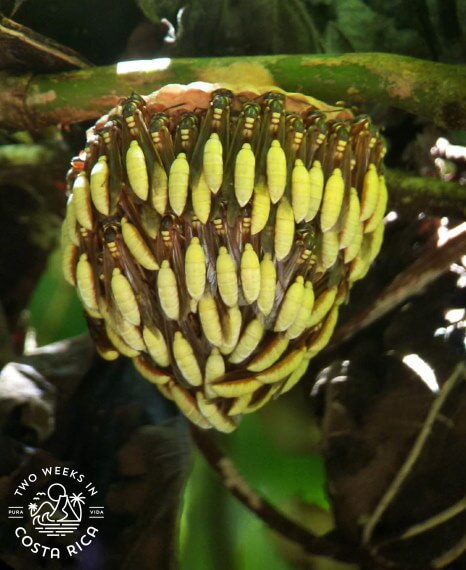
In one place, it is even necessary to hire a guide by law. Because Corcovado National Park is so remote, a guide is required to enter both on day visits and overnights. This is for safety reasons.
When Not to Hire a Guide
In some cases, guides are not always necessary. If you’re familiar with the area and just want to explore at your own pace, you can still enjoy a hike by yourself.
To see the most on your own, we always recommend arriving as early as possible since wildlife is most active during the morning hours. Late afternoon can be a great time too, especially for birds. Wildlife tends to become more active in the late afternoon, when it is moving around to feed before dark.
Another tip is to walk slowly and keep your eyes peeled. Howler and spider monkeys are often sleeping high up in the canopy during the daytime, so it can be easy to walk right past them. At ground level, you can often see frogs or cool bugs camouflaged in the leaves or soil if you look carefully.
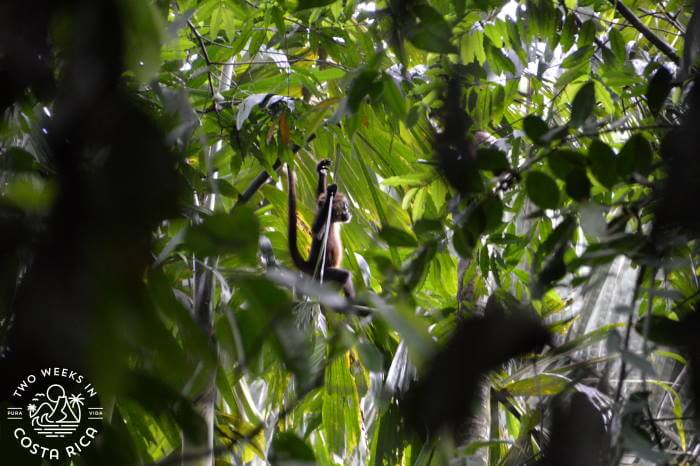
Another piece of advice is to take one or two guided tours towards the beginning of your trip and do more self-guided ones later. A guide will not only share specific information about the birds, animals, and plants you’re observing, but also will help teach you how to find these things on your own. This will get you ready for the rest of your visit as you explore other parts of the country.
Booking Guides
If you’d like help booking a good guide, we work with some amazing ones in Monteverde, La Fortuna/Arenal, Manuel Antonio, etc. Feel free to reach out through our online tour booking page.
Conclusion
We hope this post gives you a better idea of what it takes to become a tour guide in Costa Rica and when having a guide can be useful. After taking many guided tours ourselves and seeing the level of knowledge that a good guide has, we certainly have an appreciation for Costa Rica’s guides.
Have a question about guided tours in Costa Rica? Ask us below.
Looking for more information to plan your trip to Costa Rica? Check out these posts:
Bugs, Spiders, and Snakes in Costa Rica: What to Expect – Wondering about what kinds of creepy crawlies you may run into along the trail? Check out this article for what you’re likely to see as well as some uncommon critters you may want to miss.
10 Daypack Essentials for Costa Rica: Get tips on what to pack for a day hike.
Driving in Costa Rica: What to Know Before You Go – Most people find that driving wasn’t as bad as they expected. Check out our post for the local rules of the road.
